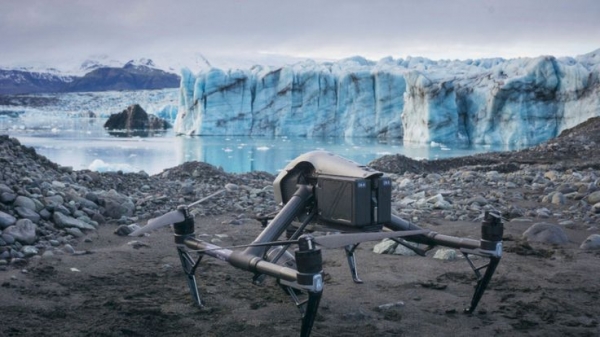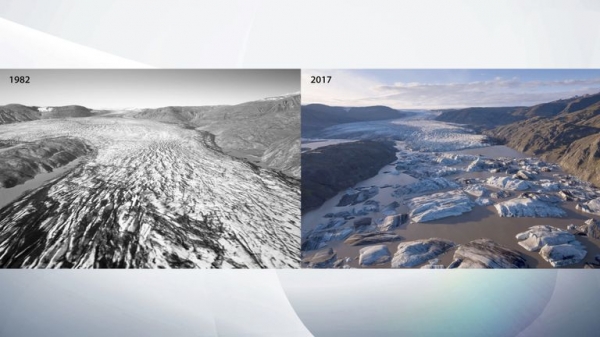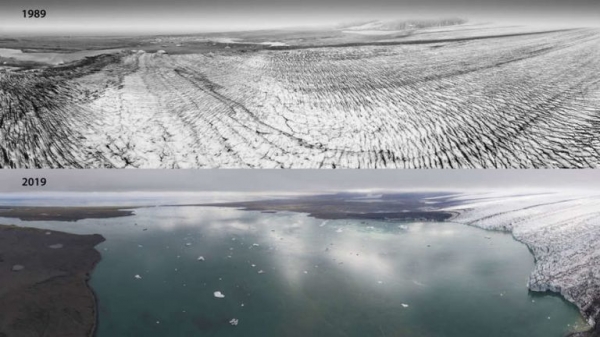Iceland’s disappearing glaciers revealed in new drone images
Composite images document changes to a group of glaciers on the south side of Vatnajokull, one of the largest ice caps in Europe.

Dr Kieran Baxter from the University of Dundee documented the changes to a group of glaciers on the south side of Vatnajokull, one of the largest ice caps in Europe, over several decades.
Aerial mapping photographs taken by the National Land Survey of Iceland in the 1980s were modelled in 3D using special software.
The images were then aligned with present day drone photographs.
Dr Baxter said: “This method allows us to compose unique aerial views of past landscapes and to see how they have changed over the last 30 to 40 years.

“This period, which is within living memory for many people, has seen accelerated melt in south-east Iceland.”
Dr Baxter continued: “While we have a fantastic resource of mapping photographs from the 1980s, this method can also be applied to aerial photographs that are even older.
“The archives are huge and we have barely scratched the surface in terms of using them to better show how the warming climate is revealed in our landscapes.”

While this process is routinely used by scientists to measure the historical ice surface, here the models are aligned with current day drone photographs to highlight the impact of climate change on the region.
Vatnajokull covers around 8% of Iceland but has lowered by around 20 metres on average in the last 30 years, according to researchers.
The glacier ice margins are said to be retreating tens of metres, and in some areas hundreds of metres, every year.
Dr Baxter led the two-year project in collaboration with the University of Iceland and the Icelandic Meteorological Office.
